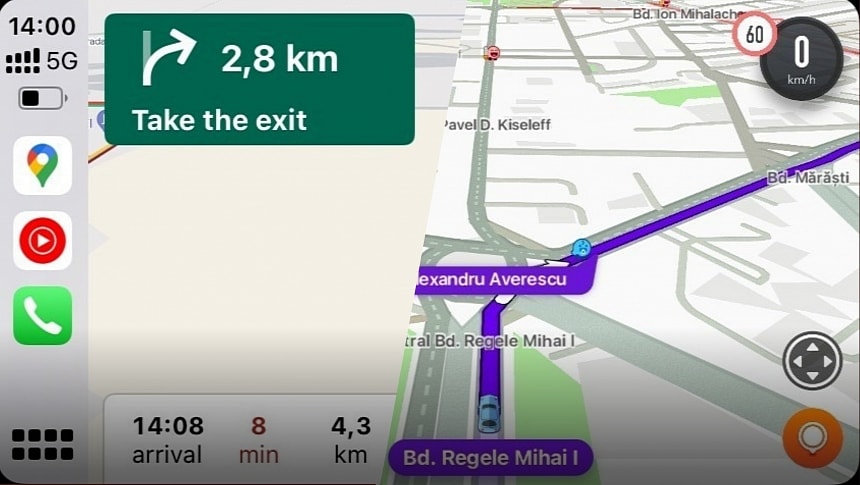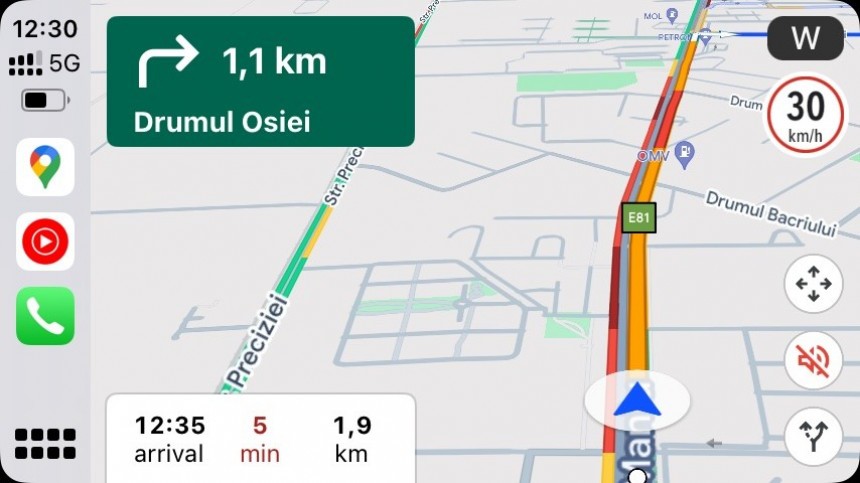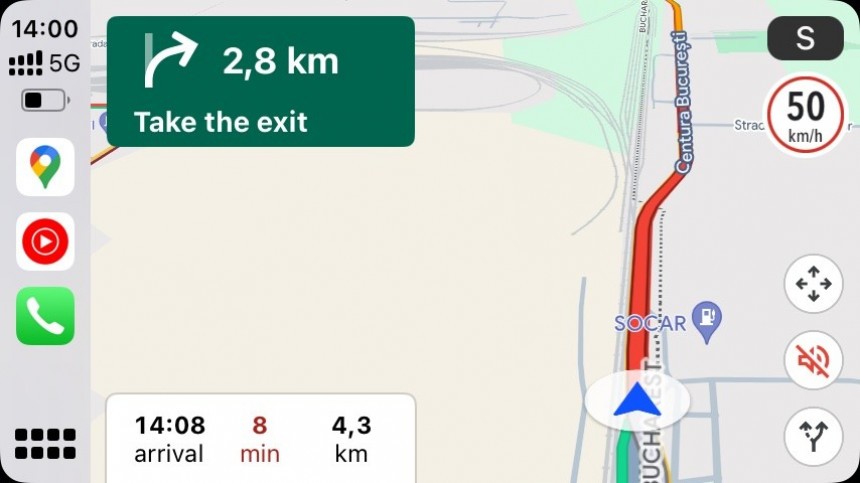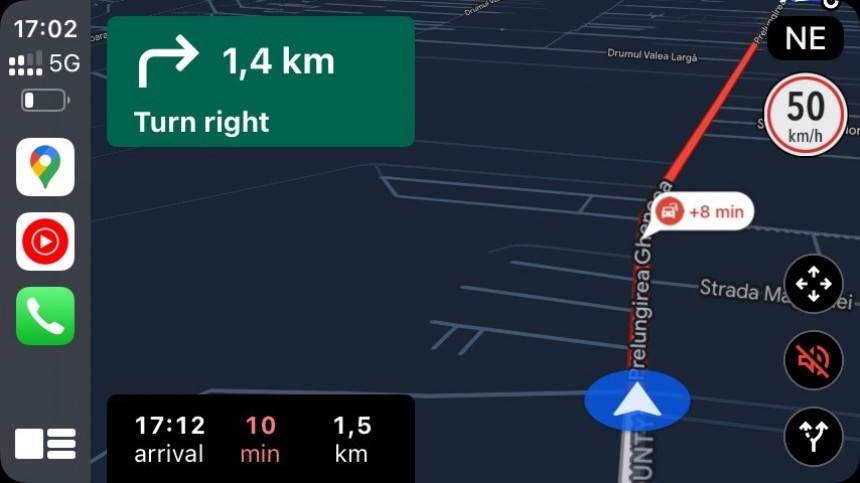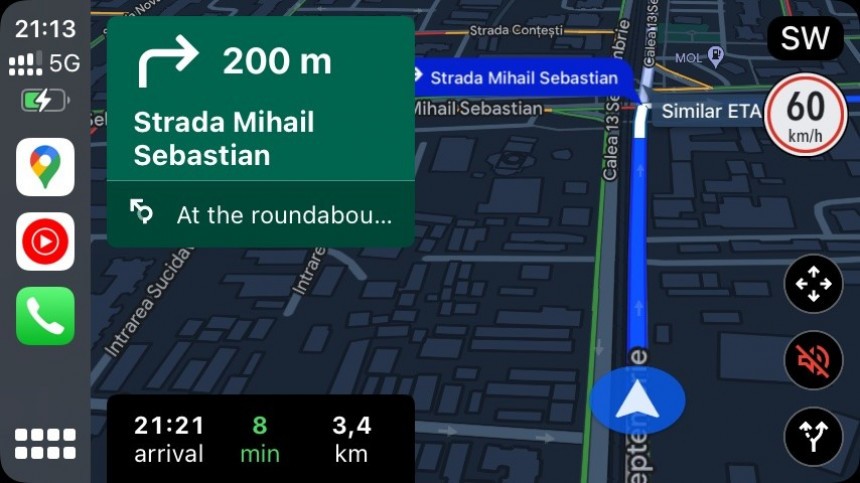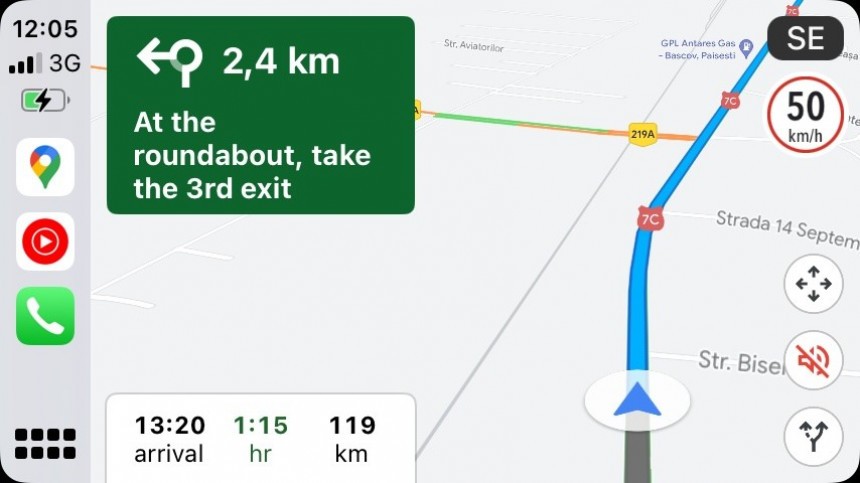I keep hearing people threatening to give up on Google Maps and Waze whenever they hit a critical bug. However, these two apps dominate the navigation space, and despite the criticism they receive every time something doesn't work as planned, they remain the preferred options on all supported platforms.
Including on iPhone and CarPlay, that is, despite Apple offering a pre-loaded alternative with similar capabilities.
Google Maps and Waze's total domination in the navigation world proves that no matter how much you hate the two apps, you still end up using them. They're the best navigation apps, and ditching them is harder than most people think.
That's why I decided to ask you, our readers, if the transition from Google Maps and Waze to any other alternative is really possible. You can use the comment box after the jump to tell me what you think and stick around as I explain why the switch is so difficult.
Google Maps comes pre-loaded with Android and is the default navigation software on Android Auto. Android is the world's number one mobile operating system, so Google Maps is the default navigation choice for a substantial number of users.
Google Maps offers a complete feature lineup that includes everything from offline maps to cross-platform support, EV charging station information, and innovative tools like Immersive View for routes. Google Maps isn't just a feature-packed navigation solution, but it also keeps evolving, getting new capabilities that rivals have a hard time developing.
Waze is a navigation app with a different goal. It boasts a crowdsourcing incident reporting engine that allows users to flag the location of hazards on the map, including accidents, broken traffic lights, speed traps, and roadkill. Waze uses this data to generate warnings for other users approaching the reported location, making every second behind the wheel safer and more predictable.
Waze lacks offline map support, so it needs a permanent Internet connection. However, its main selling point is the incident reporting system. Many companies have tried to build a similar engine, including Apple, but none managed to establish a large user base that would eventually make this feature relevant. Apple is the best example, as Apple Maps comes with incident reporting in regions where the detailed city experience is already available. However, reports are nowhere to be seen, mainly because the feature didn't gain traction, and most people interested in such capabilities use Waze.
Incident reporting can't exist without a large community to contribute with traffic reports. Waze is the only application meeting this requirement.
Waze and Google Maps have one thing in common that sets them apart from the rest of the crowd. They are both free, so users don't have to pay a single cent to use them. Waze users don't even need to send traffic reports – as long as the app runs, traffic data is uploaded to Waze's servers, so eventually, everybody contributes to improving the app.
The number of alternatives in the navigation space keeps growing. Sygic GPS Navigation, HERE's software, TomTom's applications, OsmAnd, Apple Maps, Magic Earth, and the list goes on – all these apps hope to replace Google Maps and Waze with features that make navigation more convenient.
Do they have what it takes to become a fully featured Google Maps and Waze alternative? Some do, some don't, but their user base continues to be limited. For example, Magic Earth bets big on privacy, but I'm pretty sure most of you haven't even heard about it. However, I'm certain you already have Google Maps or Waze on your phone.
Sygic's GPS Navigation is one of the best choices on Android and iPhone. It sports an amazing feature lineup, including capabilities not available in Google Maps and Waze. For example, Sygic can alert users of wrong-way drivers, helping prevent fatal crashes that occur too often. However, Sygic's application comes with a Premium package, so customers who want access to all features must pay a subscription.
Unsurprisingly, not everybody is willing to pay for a navigation app, so eventually, they stick with Google Maps and Waze in the long term. I won't delve into the amount of data that Google receives from your device, as this isn't my focus today. Many people believe Google Maps is free, yet users pay for running the app with their data. While this might be true, Google's strategy works like a charm, keeping Google Maps in the leading place in the navigation battle.
Google Maps and Waze, therefore, check all the boxes for a complete navigation app. They mix must-have features with cross-platform support, a freeware license, a huge community powering their main capabilities, and support from one of the world's biggest tech giants.
Is ditching Google Maps and Waze really possible? You be the judge.
Tell me what you think in the box below. I'm particularly interested in answers from people who already jumped ship. What app did you choose, and how easy was the transition from Google's software?
Google Maps and Waze's total domination in the navigation world proves that no matter how much you hate the two apps, you still end up using them. They're the best navigation apps, and ditching them is harder than most people think.
That's why I decided to ask you, our readers, if the transition from Google Maps and Waze to any other alternative is really possible. You can use the comment box after the jump to tell me what you think and stick around as I explain why the switch is so difficult.
Google Maps offers a complete feature lineup that includes everything from offline maps to cross-platform support, EV charging station information, and innovative tools like Immersive View for routes. Google Maps isn't just a feature-packed navigation solution, but it also keeps evolving, getting new capabilities that rivals have a hard time developing.
Waze is a navigation app with a different goal. It boasts a crowdsourcing incident reporting engine that allows users to flag the location of hazards on the map, including accidents, broken traffic lights, speed traps, and roadkill. Waze uses this data to generate warnings for other users approaching the reported location, making every second behind the wheel safer and more predictable.
Incident reporting can't exist without a large community to contribute with traffic reports. Waze is the only application meeting this requirement.
Waze and Google Maps have one thing in common that sets them apart from the rest of the crowd. They are both free, so users don't have to pay a single cent to use them. Waze users don't even need to send traffic reports – as long as the app runs, traffic data is uploaded to Waze's servers, so eventually, everybody contributes to improving the app.
Do they have what it takes to become a fully featured Google Maps and Waze alternative? Some do, some don't, but their user base continues to be limited. For example, Magic Earth bets big on privacy, but I'm pretty sure most of you haven't even heard about it. However, I'm certain you already have Google Maps or Waze on your phone.
Sygic's GPS Navigation is one of the best choices on Android and iPhone. It sports an amazing feature lineup, including capabilities not available in Google Maps and Waze. For example, Sygic can alert users of wrong-way drivers, helping prevent fatal crashes that occur too often. However, Sygic's application comes with a Premium package, so customers who want access to all features must pay a subscription.
Google Maps and Waze, therefore, check all the boxes for a complete navigation app. They mix must-have features with cross-platform support, a freeware license, a huge community powering their main capabilities, and support from one of the world's biggest tech giants.
Tell me what you think in the box below. I'm particularly interested in answers from people who already jumped ship. What app did you choose, and how easy was the transition from Google's software?
